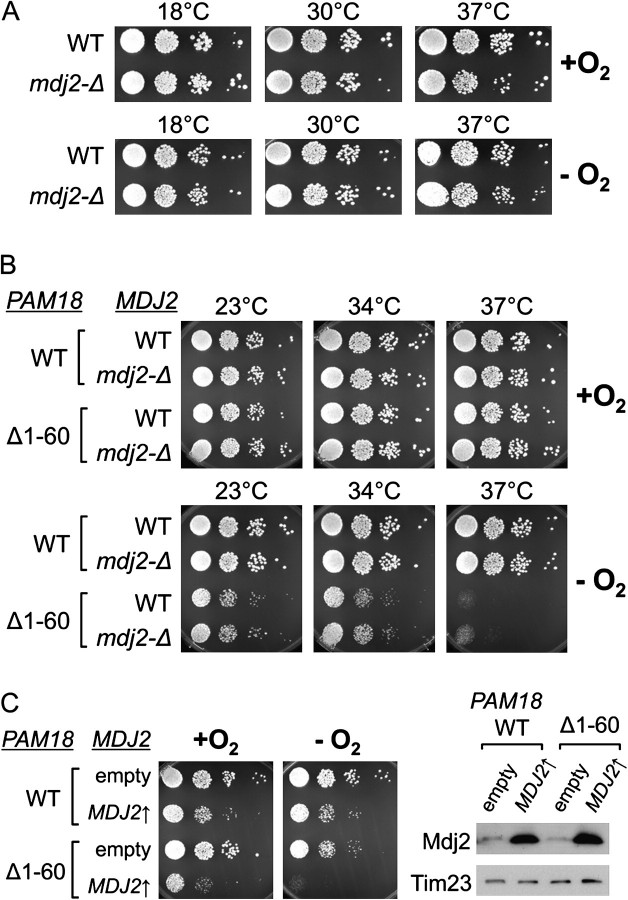FIG. 7.
Mdj2 does not compensate for lack of the IMS domain of Pam18 in the absence of oxygen. (A) Cells lacking Mdj2 have no anaerobic growth defect. Ten-fold serial dilutions of wild-type (WT) and mdj2-Δ cells were spotted on SC + Erg/TW plates and grown in the presence (+O2) or absence (−O2) of oxygen at the indicated temperatures. (B) No synthetic genetic interaction between mdj2-Δ and pam18Δ1–60 mutations. The indicated combinations of mutants were grown in the presence (+) or absence (−) of oxygen as described in A. In the case of PAM18, the chromosomal copy was deleted, and the control WT Pam18 (WT) and Pam18Δ1−60 (Δ1−60) were expressed from the pRS315 plasmid. (C) Overexpression of Mdj2 does not rescue the anaerobic growth defect of pam18Δ1−60 cells. (Left) pam18-Δ cells expressing either full-length Pam18 (WT) or Pam18Δ1−60 (Δ1−60) from pRS315 as well as harboring either p416 having MDJ2 under the control of the GPD promoter (MDJ2↑) or p416 control vector (empty) were grown in the presence (+O2) or absence (−O2) of oxygen. SC-Ura-Leu dropout media with Ergosterol and Tween 80 supplement (SC-Ura-Leu + Erg/Tw) were used to ensure plasmid retention. Cells were grown at 34 °C aerobically for 2 days or anaerobically for 2.5 days. (Right) Whole cell lysates prepared from cells cultured on SC-Ura-Leu + Erg/Tw at 30 °C under anaerobic condition were used for the immunoblot analysis with antibodies against Mdj2 and Tim23, as the loading control.

